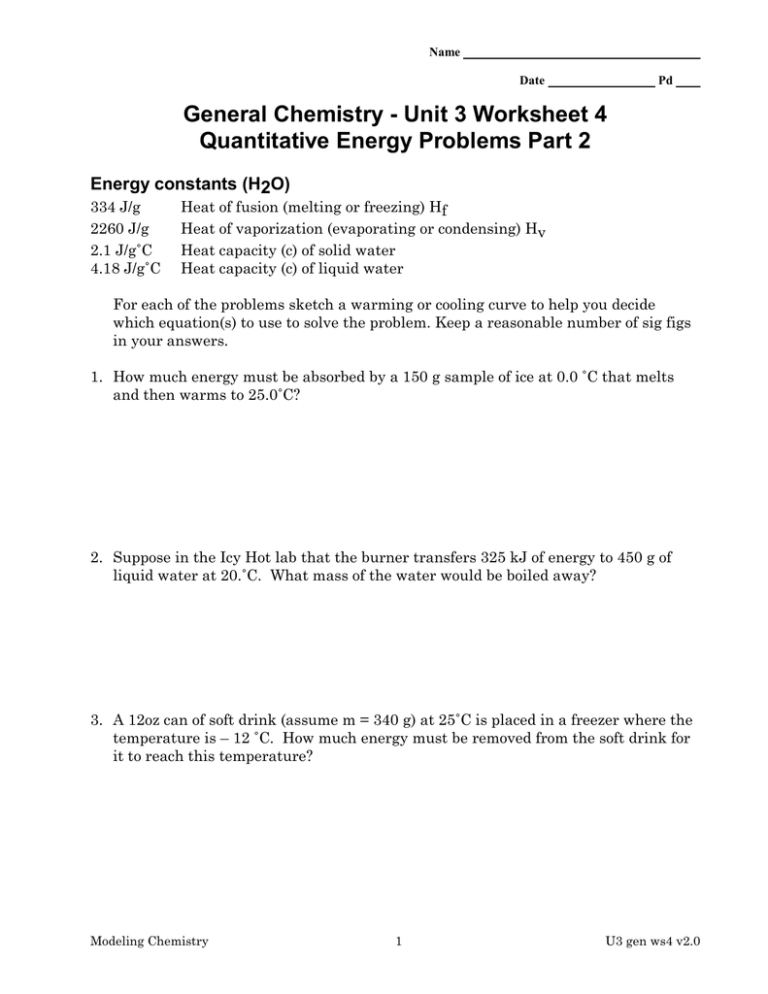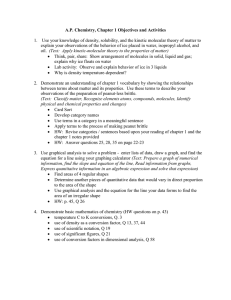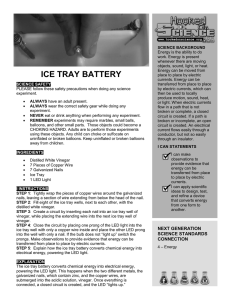General Chemistry - Unit 3 Worksheet 4 Energy constants (H2O)
advertisement

Name Date Pd General Chemistry - Unit 3 Worksheet 4 Quantitative Energy Problems Part 2 Energy constants (H2O) 334 J/g 2260 J/g 2.1 J/g˚C 4.18 J/g˚C Heat of fusion (melting or freezing) Hf Heat of vaporization (evaporating or condensing) Hv Heat capacity (c) of solid water Heat capacity (c) of liquid water For each of the problems sketch a warming or cooling curve to help you decide which equation(s) to use to solve the problem. Keep a reasonable number of sig figs in your answers. 1. How much energy must be absorbed by a 150 g sample of ice at 0.0 ˚C that melts and then warms to 25.0˚C? 2. Suppose in the Icy Hot lab that the burner transfers 325 kJ of energy to 450 g of liquid water at 20.˚C. What mass of the water would be boiled away? 3. A 12oz can of soft drink (assume m = 340 g) at 25˚C is placed in a freezer where the temperature is – 12 ˚C. How much energy must be removed from the soft drink for it to reach this temperature? Modeling Chemistry 1 U3 gen ws4 v2.0 4. 65.0 kilojoules of energy are added to 150 g of ice at 0.0˚C. What is the final temperature of the water? 5. 250 kJ of energy are removed from a 4.00 x 102 g sample of water at 60˚C. Will the sample of water completely freeze? Explain. 6. An ice cube tray full of ice (235g) at –7.0˚C is allowed to warm up to room temperature (22˚C). How much energy must be absorbed by the contents of the tray in order for this to happen? 7. If this same quantity of energy were removed from 40.0 g of water vapor at 100˚C, what would be the final temperature of the water? Modeling Chemistry 2 U3 gen ws4 v2.0



